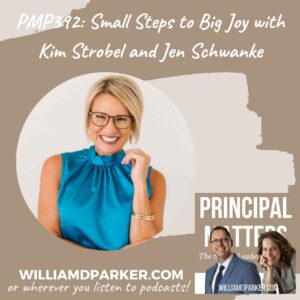Last week a teacher told me how excited she was to see the seemingly endless strategies teachers can use in helping students grow (see previous post).

As we talked about John Hattie’s list together, I began to think about how helpful it may be to focus on some of his specific strategies for more clarification.
Let’s start at the top of the list: The first strategy from Hattie’s list is “self-reported grades”, so here are three takeaways I wanted to pass along—one from a Hattie summary, one from my own experience, and a third from teachers at my school:
Tip #1: Have Students Set Expectations For Performance
On the website, Visible Learners, you can find a helpful summary of Hattie’s first strategy:
Self reported grades comes out at the top of all influences. Children are the most accurate when predicting how they will perform. In a video Hattie explains that if he could write his book Visible Learning for Teachers again, he would re-name this learning strategy “Student Expectations” to express more clearly that this strategy involves the teacher finding out what are the student’s expectations and pushing the learner to exceed these expectations. Once a student has performed at a level that is beyond their own expectations, he or she gains confidence in his or her learning ability.
Example for Self-reported grades: Before an exam, ask your class to write down what mark the student expects to achieve. Use this information to engage the student to try to perform even better.
Tip #2 Help Students Set Goals For Overall Learning
Another way to engage student expectations is through goal setting at the beginning of each course. Here’s an example from my classroom years. At the start of a semester, I would have this conversation with my students:
“How many of you love to play a sport or compete in an activity? Any soccer players in the room? Great. Now imagine you show up for a soccer game. You’re in your uniform, your teammates are on the field. The other team is warming up. The clock is set, the officials are on the field, and the whistle is blown to begin play.”
“Suddenly, you realize there are no goals. The ref blows a whistle and the search begins. What will be impossible to do without goals? That’s right. I will be impossible to score.”
“So often we show up to classes because they’re on your schedule. You go through the motions, you may even do what you’re told, but without a goal, you look as effective as a soccer team without a goal for scoring.”
“So what is your goal for this lesson? Or what is your goal for this course? I want to you write yours down on a sheet of paper for me. Tell me what you plan to accomplish, what grade you’d like to earn, and what goal you would like to reach by the end of our time together?”
After giving them time to reflect, I would collect these goals. Later I would share them to remind students what goals they had set for themselves.
Tip #3 Share Rubrics for Self-Assessment
Hattie also mentions self-assessment as a powerful strategy. Last week, three of my English teachers were telling me of how they have begun having students write essays using Google Docs. Our teachers share Chrome Carts so that our students can each have a device to use during writing assignments.
When the teachers log in to read the students’ essays, the teachers can leave comments on notes tabs within the Google Doc. They also share their grading rubric ahead of time so that students can check and mark their own work for accuracy before it is graded.
This kind of collaboration is so much more powerful than simply having the student responding to a prompt. Knowing their writing goals ahead of time and getting quick feedback directly on the document they’ve created makes it easier to correct and master the writing process.
Conclusion
Whether students are predicting how they will perform, setting goals before learning, or self-assessing as they learn, the key is that they are engaged in their own learning. They aren’t just passive “receivers” of information.
Whether you’re leading a classroom or an entire school community, we can all encourage student academic growth when we avoid going through the motions and instead have meaningful conversations about what we expect to learn.
Now It’s Your Turn
What are some other suggestions you would add to the list of ways to have students set expectations for their performance?
Sign-Up For Free Updates and Ebook
When you enter your email address below, you will automatically receive my newest posts and a free Ebook, 8 Hats: Essential Roles for School Leaders. Let’s keep learning together!
Subscribe for free weekly updates and receive free e-book!
(function($) {window.fnames = new Array(); window.ftypes = new Array();fnames[0]=’EMAIL’;ftypes[0]=’email’;fnames[1]=’FNAME’;ftypes[1]=’text’;fnames[2]=’LNAME’;ftypes[2]=’text’;}(jQuery));var $mcj = jQuery.noConflict(true);
Principal Matters–The Book!

School leaders are very busy, so each of the twenty-four chapters is designed as a quick-read and followed with take-action questions for follow-up or reflection. If you want practical ideas on understanding your purpose, managing school teams, dealing with challenges, and leading with courage, action, motivation, and teamwork, go HERE to pick up a copy for you or your team.


